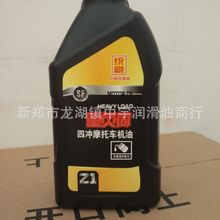Here's why your shoelaces annoyingly come undone
When your shoelaces comes untied, the thought that probably pops in your brain is: "Ugh, that's annoying. Guess I'll retie my laces now."
But to mechanical engineers, this tedious occurrence represents a scientific black hole. Why do shoelaces shake off their knots, and how? Why is one way of tying a shoelace stronger than the other?
SEE ALSO:These steel-like socks could replace your favorite shoesEngineers at the University of California, Berkeley, recently took these questions to the lab. Using a slow-motion camera during a series of experiments, they developed a theory that might solve the mystery of floppy shoelaces.
Within a matter of seconds, a "double whammy" of stomping and whipping forces seems to act like an invisible hand that loosens the knot and tugs on the laces' free ends until, finally, the knot unravels, the team said in a new study published in the journal Proceedings of the Royal Society A.
 "Darn complex interactions of forces."Credit: jan kruger/Getty Images
"Darn complex interactions of forces."Credit: jan kruger/Getty ImagesWhen you're running, for instance, your foot strikes the ground at seven times the force of gravity. That causes the knot to stretch and relax, they found. As the knot loosens, the running legs apply an inertial force on the free ends of the laces. These complex interactions start an "avalanche effect" that leads to the knot coming untied.
"Some laces might be better than others for tying knots, but the fundamental mechanics causing them to fail is the same, we believe," Christine Gregg, a study co-author and graduate student, said in a news release.
Gregg, who is a runner, jogged on a treadmill for the study while her colleagues filmed her shoes. During the experiments, the team also added weights to the free ends of laces and found that knots failed at higher rates as the inertial forces on the free ends increased.
The researchers said more experiments are needed to fully understand the mechanics behind self-untying shoelaces. For instance, they don't know why, mechanically speaking, different approaches to tying two strands together are stronger or weaker than others.
 An overhead view of how to tie the weak knot (left) and the strong knot (right).Credit: uc berkeley
An overhead view of how to tie the weak knot (left) and the strong knot (right).Credit: uc berkeley"More research is needed to tease apart all the variables involved in the process," the engineers said.
Christopher Daily-Diamond, a study-co-author and graduate student, said their early findings might have implications far beyond the realm of running shoes.
"When you talk about knotted structures, if you can start to understand the shoelace, then you can apply it to other things, like DNA or microstructures, that fail under dynamic forces," he said in the news release.
Featured Video For You
Talking shoe sensor coaches you as you run
相关文章
 The world's largest single-capacity floating wind platform has set to sea and the builder released i2024-09-22
The world's largest single-capacity floating wind platform has set to sea and the builder released i2024-09-22
Alcaraz reaches Barcelona semis and world top 10
BARCELONA:Carlos Alcaraz defeated top seed Stefanos Tsitsipas in a three-set rollercoaster to reach2024-09-22
See the Earth as International Space Station astronauts see it
There's no shortage of videos of Earth as seen from space. Indeed, NASA has a direct, high definitio2024-09-22
U.S. commander: North Korea can 'range continental U.S.' with ICBM
North Korea can "range the continental United States" with an intercontinental ballistic missile and2024-09-22 China's Tsinghua University has scored a world first by demonstrating the inherent safety of the fir2024-09-22
China's Tsinghua University has scored a world first by demonstrating the inherent safety of the fir2024-09-22
Fury's legacy on the line in front of record crowd
LONDON:Tyson Fury will defend his WBC heavyweight title in front of a British record boxing crowd of2024-09-22

最新评论